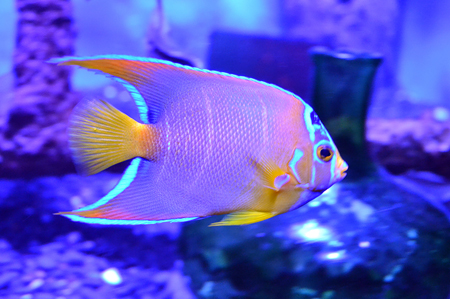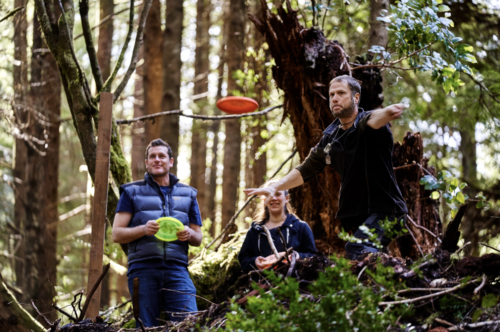
For hundreds of years, steamers, schooners, square-riggers, freighters and tugs — vessels of every stripe and from all over the globe — have met their fate off the Oregon Coast. Some are buried in the depths, never to be found, while the tangled remains of others are heaving from the sands.
To learn more about what wrecks can teach us, head to “Secrets of Shipwrecks” at the Oregon Coast Aquarium in Newport and spend an afternoon playing Indiana Jones. The popular exhibit is part history and part mystery, and it gives visitors a chance to explore marine archeology, says the aquarium’s director of education Kerry Carlin-Morgan.
Starting with a global perspective, the exhibition shows how we find, explore and conserve shipwrecks. Looking at areas with a high concentration of wrecks — the Caribbean, the Great Lakes and the Red Sea — the galleries feature model debris fields filled with artifacts, aquatic animals that make these watery graveyards their home, and hands-on activities highlighting the methods and technology of navigation and exploration.
“Visitors can get a feel for why navigating the Coast would be a challenge,” says Carlin-Morgan. “Even with modern technology it’s a challenge — we have a big angry ocean out there.”
Indeed, the Oregon Coast is known for its angry waters, and the exhibit takes a closer look at a few of the nearly 3,000 wrecks off its shores. Visitors can learn more and see artifacts from The Mimi (Nehalem); Spanish Galleon or beeswax, as it’s known (Nehalem); The Glenesslin (Neahkahnie); and the Emily G. Reed (Rockaway Beach).
You don’t have to look far beyond the exhibit to see how shipwrecks have left their mark on the Oregon Coast, with many places named after wrecks. Near the mouth of the Columbia, Peacock Spit is named for the wreck of the U.S.S. Peacock in 1841, and Benson Beach, after the steamship Admiral Benson; after it went down in 1930, its bow was visible for decades. At the Cannon Beach History Center and Museum, see Cannon Beach’s namesake cannon, a remnant of the wrecked Navy ship Shark, which ran aground in 1846. Legend has it that Florence takes its name from a shipwreck; as the story goes, the moniker stuck when the nameplate from the Florence, an 1875 offshore wreck, was found and nailed up over the post office. And the impressive 1910 wreck of the steam schooner J. Marhoffer gave Boiler Bay its name.
There are several places on the Coast where you can see shipwrecks today — some are always visible, while others come and go, ghosts under the shifting sands. The most renowned is probably the British sailing ship Peter Iredale, which ran aground off Clatsop Beach in 1906 and instantly became a local attraction. Its rusty hull rises from the sands at Fort Stevens State Park. In 2008, storms revealed about 100 feet of the Emily G. Reed on Rockaway Beach, which wrecked on Valentine’s Day in 1908 The same stormy season also unearthed the George L. Olson on Horsfall Beach in North Bend; the steam schooner struck Coos Bay’s North Jetty and broke apart in 1944.
If your imagination is piqued by shipwrecks, be sure to visit the Columbia River Maritime Museum in Astoria. With approximately 2,000 wrecks at the mouth of the Columbia alone (known as the Graveyard of the Pacific), the museum has an exhibition exploring the treacherous Columbia River Bar and a sizable collection of artifacts.
Photo courtesy of the Oregon Coast Aquarium



